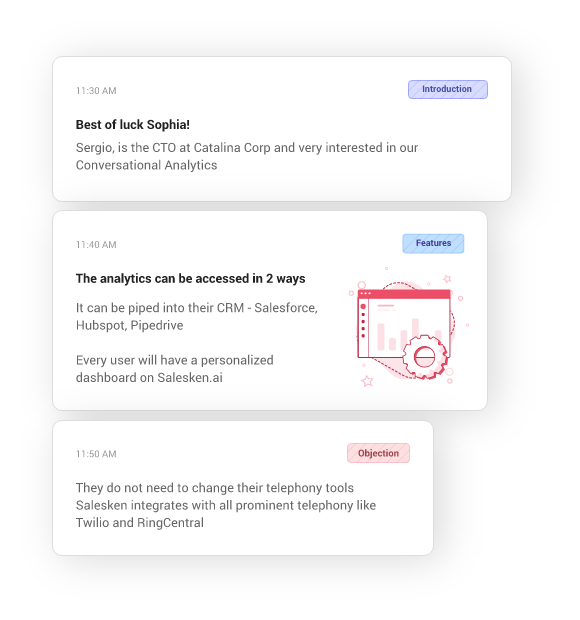A study of 886 sales leaders showed that it takes four months for 74.6% of businesses to sell their products to new clients, while 46.4% mentioned that the process could last for about seven months in some cases. As you can see, closing a deal is not an easy process. When it comes to B2B sales, the process becomes much trickier.
If you study these numbers in detail, it will make more sense that far too many decision-makers are getting a deal done. What can you do to make the process smooth and close the deal without stretching out the time limit? And how do you avoid clients changing their minds?
Once your product is up and running, you will have to find your target audience and define the pathway for the product’s sales cycle and the techniques that speed up the process and retain the customers by using the right words in your sales call. You will also have to find out:
- How will the market be exposed to your product?
- How long will it take for them to purchase your product?
- What outside factors will affect your sales cycle?
How long does it take to close a deal?
A study from Harvard University suggests that it takes about seven months to close a B2B deal. Another study showed that the average B2B cycle length has increased up to 22% in the last five years. It makes sense when decision-makers are involved in the process, and B2B buyers can research and buy decisions. But it can still be a disadvantage.
A longer sales cycle can lead to buyers having second thoughts about your products. The longer time you decide, the more changes are changes of prospects having second opinions, thus putting all your efforts at stake. So, you can’t make them wait. Then, what should you do? How can you make sure that prospects don’t change their decision? Or how you can accelerate the sales process?
Four ways to Accelerate the B2B Sales Process:
Set up a benchmark:
In this step, you will have to figure out how long it takes to close a deal. Many factors affect the length of a sales cycle. And the size varies from company to company. Because no two factors are the same if you compare with your competitors, you’ll have to figure out the average length of your sales cycle. You can start by tracking your B2B sales cycle length if you use a CRM system that showcases all the incoming leads that pass through every stage of your sales pipeline and later convert into buying customers. It will help you understand the sales process and give you insight into how you can start with your sales acceleration.
Identify the weak spots:
In this step, you’ll have to find the weak spots that can extend your sales cycle. And if there are any, you’ll have to find them and fix them asap. The weak spots can be in any of the seven stages of the B2B cycle:
- Prospecting: Finding, researching, and qualifying your ICP that matches the length of your requirements.
- Outreach: Sending cold emails to your ICP connections that make introductions about your conversations and invite your recipients to a conversation.
- Qualification: Your chosen ICP prospects might sound a good fit to you first until you start a conversation with them and find out their needs and pain points to make sure that your product solves their problem.
- Making an offer: Pitching your USP to your prospects. Tailor your pitch whenever you pitch a new client so that it appeals to their business needs.
- Negotiations: it’s a stage where you negotiate the pricing, solve their concerns and hear them out. It’s a time where you can build a trusting relationship and establish a connection.
- Closing a deal: this is the final stage of your sales cycle. Here, the contract is signed, and your prospect is converted into your customer. However, keep connected with your customer even after the deal is closed.
Go through every stage and find out how many days it takes your prospects to progress further to the next stage? Which stage is the most time-consuming? Once you find the weak spot, check out the pace of sales conversation, the prospect’s behavior, and what kind of tactics your sales rep uses. After you’d have done your research and taken the necessary steps, watch and compare the results with your benchmark.
Find your strongest points
After you find the weak points, it’s time to find out the strong points of your sales cycle. Sometimes, it’s the inbound sales or best conversations that drive more leads. Whatever the medium is, use your best sales channel to identify new approaches to generate leads and empower weak channels. Remove the channels that drive zero engagement.
Facilitate your workflow and refine your data
If your team has to do a lot of repetitive work every day, it’s time to start automating those tasks. Repetitive jobs like data entry, sending emails can be automated to save up some time. Switching to a multi-purpose CRM is also a way to automate tasks. In addition to automating the tasks, try to organize your tasks, which helps to focus on securing deals more.
Conclusion
Accelerating your sales cycle requires you to take a deep look into your current sales process, find out the weak spots, and fix or remove them. The results differ for every company, but once you understand the components of your sales pipeline and how it works, you can develop different approaches to accelerate the sales process.











